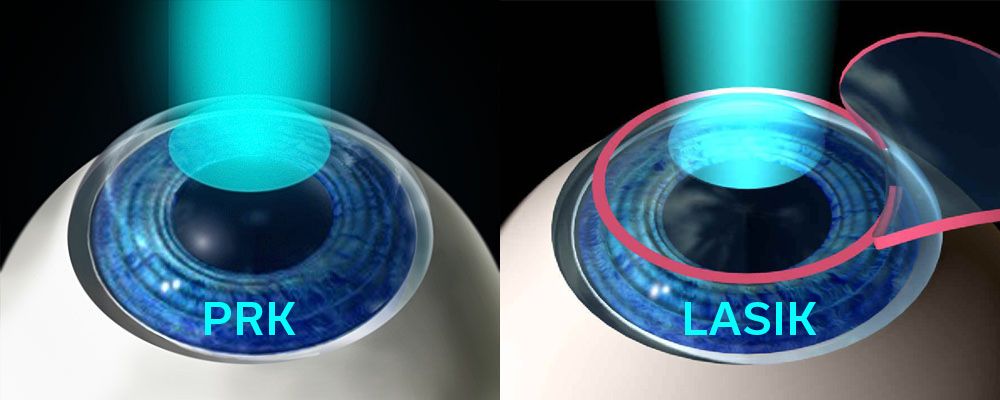Refractive surgery is a procedure that allows the visual correction of refractive errors, specifically myopia, hyperopia, and astigmatism, through the application of a laser. The laser used for this procedure is the Excimer Laser, which generates virtually no heat. Laser surgery has already made the dream of millions of people come true to return to daily activities such as driving, watching television, and reading without the use of corrective lenses, even when 20/20 visual acuity and zero myopia are not achieved. The ophthalmologist will recommend the most appropriate technique between prk vs lasik for each patient, according to the refractive error and the characteristics of each one.
PRK (Photorefractive Keratectomy)
This technique was developed for laser visual correction and prepares the cornea to receive the laser application. It consists of scraping the corneal epithelium and applying the laser to a layer called Browman’s Membrane and subsequently to another layer called the stroma.
The ophthalmologist anesthetizes the patient’s cornea (1) with eye drops and removes a small part of the surface with a specific device (2). The Excimer laser remodels the shape of the cornea, acting on its surface for less than 1 minute (3).
The surgeon may then place a contact lens (4) to protect the treated area, prevent infection and reduce discomfort during healing. The lens is removed within five to six days after surgery. The vision gradually improves in the first two weeks, and you can reach the definitive result between four and eight weeks. During this period, the doctor may prescribe the use of eye drops.
LASIK (Laser In Situ Keratomileusis)
LASIK involves flapping (cap) on the cornea and applying the laser to a stroma layer. This technique can correct high and low degrees of myopia and moderate astigmatism and hyperopia. In this procedure, drops of anesthetic eye drops are dripped into the eye, and the eyelids are immobilized by a device to prevent the person from blinking during the laser action. A device called a microkeratome cuts a thin layer of the cornea. The laser light then sculpts and shapes one of the cornea’s inner layers, making it flatter.
More About Refractive Surgery
This surgery applies to most people as long as they are at least 21, have healthy corneas, and meet certain criteria, such as grade stability over the past two years. The patient must undergo surgery well-informed, previously undergoing an evaluation consultation in which the ophthalmologist such as Kraff Eye Institute for example will decide whether laser surgery is indicated, in addition to explaining the benefits and risks of the procedure. By analyzing why the patient wants not to wear corrective lenses (glasses or contact lenses), the doctor will help him decide whether his expectations can be met.
What Are Refractive Errors?
Refractive errors occur when the eyes can no longer focus images correctly on the retina, resulting in blurred vision. These errors are caused by myopia, hyperopia, astigmatism, and presbyopia.
Myopia – Difficulty seeing far away.
Hypermetropia – Inability to see up close. Known as “short arm” vision, the individual must move the object away to see properly.
Astigmatism – is when vision becomes blurred when looking at objects near and far. It can also occur when light is shined into the eye, and image sharpness is lost, such as driving at night.
Presbyopia – difficulty seeing close objects clearly in people over 45 years old. She was known as a tired view.
About Author
You may also like
-
Why Implantable Collamer Lens Surgery is a Game-Changer for Eye Care in London
-
Lift Your Look: Face Lifting Techniques for Youthful Skin
-
Your Comprehensive Guide to NDIS Plan: Tips and Advice
-
What to Expect During a Physio-Osteo Session
-
Customising First Aid Kits: Tailoring Supplies to Meet Unique Needs and Requirements


